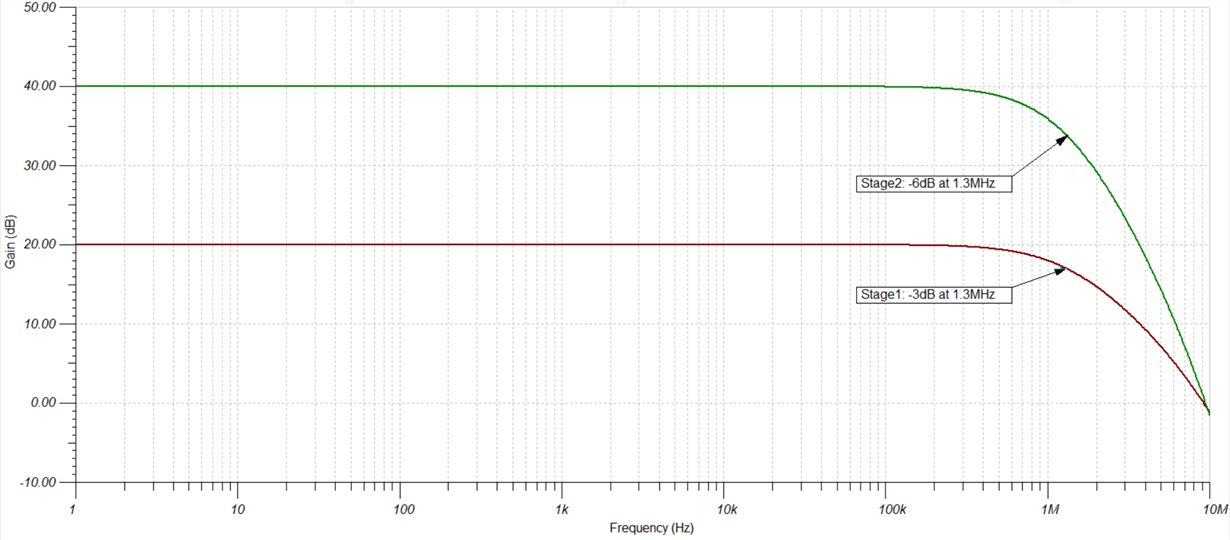Other Parts Discussed in Thread: TINA-TI, TLV9002, THS3491
Hi,
I have made a two stage amp simulation of TLV6742, and the gain is 10 each. The total noise of the first stage is 65uV rms, which is equal to the result of my calculation. However, the total noise of the two stage amp is about 493 uV rms, which is less than 65uV *10.
Is it because the second stage has the same bandwidth as the first stage, and the noise get reduced by the second stage? If so, how can I calculate the total noise of the two stage amp to get the result of 493 uV rms, like the simulation result?
Thank you so much for your help and look forward to your reply.
Best regards,
Wendy



